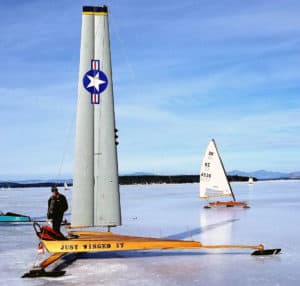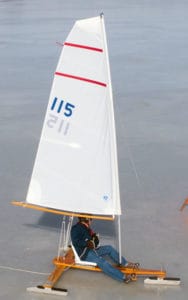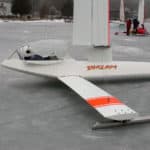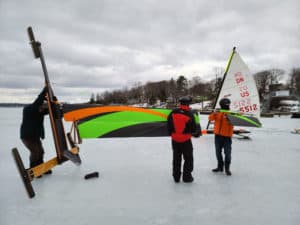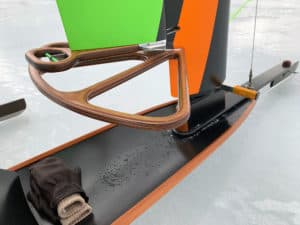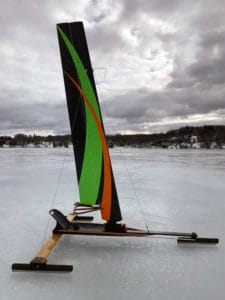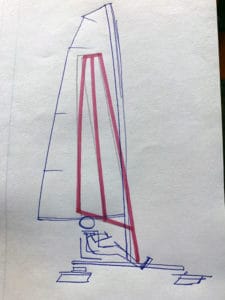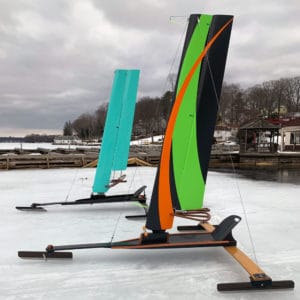“That Will Buff Right Out”

Via 4LIYC Commodore Daniel Hearn:
Wow, what a time we had on Lake Pepin over the weekend! Such a beautiful place to ice sail, with the surrounding bluffs and bald eagles flying everywhere. Thanks to Pat Heppert, who scouted ice on Friday, we knew we were in for a special weekend, if the wind cooperated. We had a massive sheet of nice ice. Not perfect, but plenty smooth even for the little boats. And no heaves to deal with. The light wind forecast for Saturday kept many interested sailors away, but the C-Skeeters were able to sail all morning. And then the breeze filled in nicely in the afternoon. Pat and I ripped around for hours working on tuning, joined by three DNs (Bob Cummins, Matt Meyer and Erin Bury) and one Mini Skeeter (Tom C).
Also got a chance to sail my wing boat for just the second time. Great fun, and I was particularly amazed at the upwind performance. Couple local kids hovered around the pits all afternoon, asking lots of questions and helping out. When I asked if they wanted to give the wing boat a go, at first they thought I was kidding. Patrick and Philip both made her go nicely, and returned to the pits impressively with smiles as wide as the lake.
Breeze was up considerably on Sunday. Pat and I put up our small sails, loaded up with lead and slacked our stays. It was game on, for sure! Looking to catch Fast Pat in our first official race, I was striving to minimize my end plate effect. I definitely closed the gap between my boom and hull, but it exposed my weak spine. (Yeah, I know, not the first time).
With the help of my sailing mates, we removed the boom and sail, and then “de-penetrated” the mast. No damage other than a spine that needs to be rebuilt. Ahhh, but a scratch! So I pushed in to retrieve my wing boat that was already set up and ready to go. And GO it did! Even with next to no wing driving skills, the boat was fast and smooth. In particular, I was blown away with the upwind performance. A hard wing climbs the upwind ladder like nobody’s business.
To complete our amazing weekend, Pat and I sailed all the way down to the infamous Pickle Factory for a delicious lunch. (Picture taken through the window of the bar). It’s 6 miles one-way, and we never had to even negotiate a heave. There, we met up with local Ed Newcomb, who is the owner of two Madison-built A-Skeeters–a Mattison and a Whitehorse–both of which were on the ice, having just completed a sporty session.
About a dozen DNs sailed numerous scrub races while Pat and I were on our adventure. Lots of good tuning took place, with great times reported by all.
Hopefully the fun can continue at the Northwest next weekend!

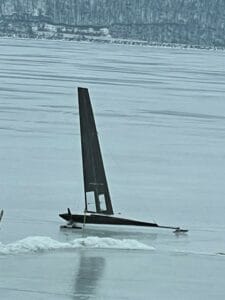 With the help of my sailing mates, we removed the boom and sail, and then “de-penetrated” the mast. No damage other than a spine that needs to be rebuilt. Ahhh, but a scratch! So I pushed in to retrieve my wing boat that was already set up and ready to go. And GO it did! Even with next to no wing driving skills, the boat was fast and smooth. In particular, I was blown away with the upwind performance. A hard wing climbs the upwind ladder like nobody’s business.
With the help of my sailing mates, we removed the boom and sail, and then “de-penetrated” the mast. No damage other than a spine that needs to be rebuilt. Ahhh, but a scratch! So I pushed in to retrieve my wing boat that was already set up and ready to go. And GO it did! Even with next to no wing driving skills, the boat was fast and smooth. In particular, I was blown away with the upwind performance. A hard wing climbs the upwind ladder like nobody’s business.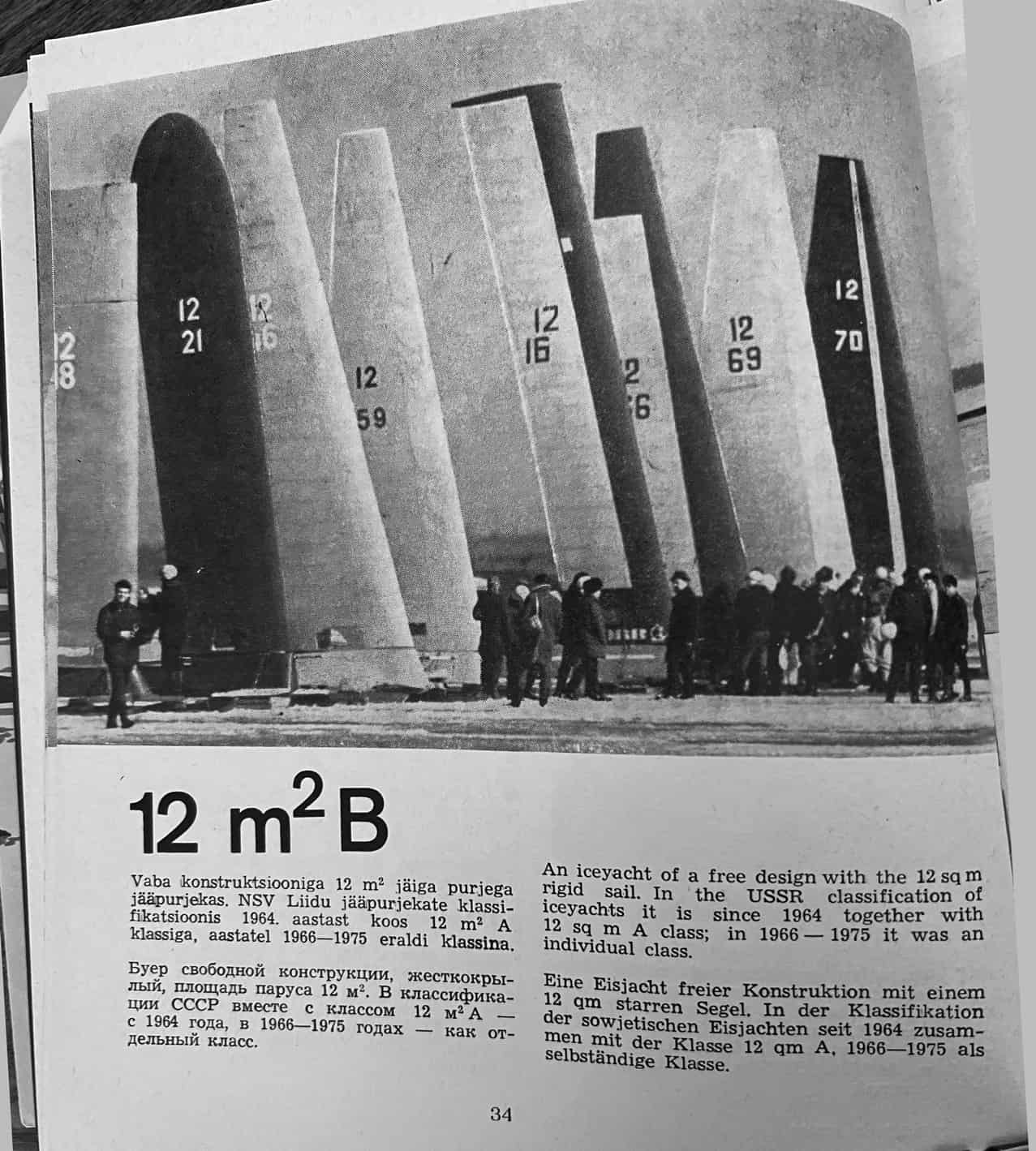
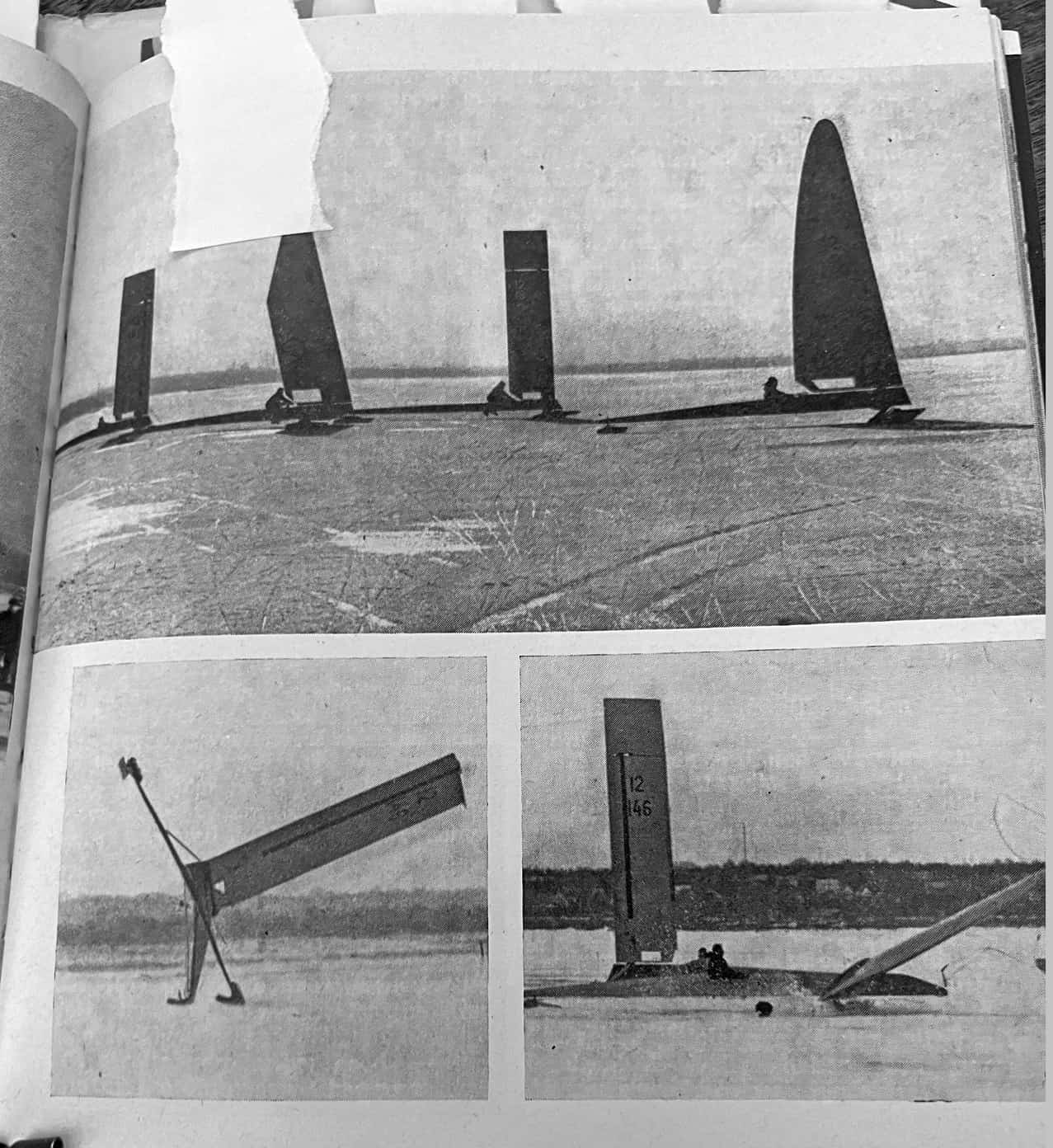
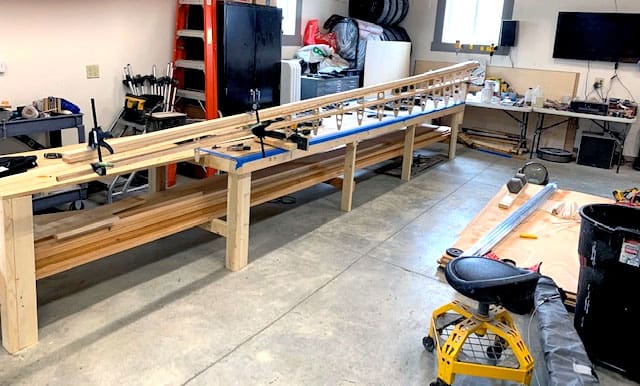
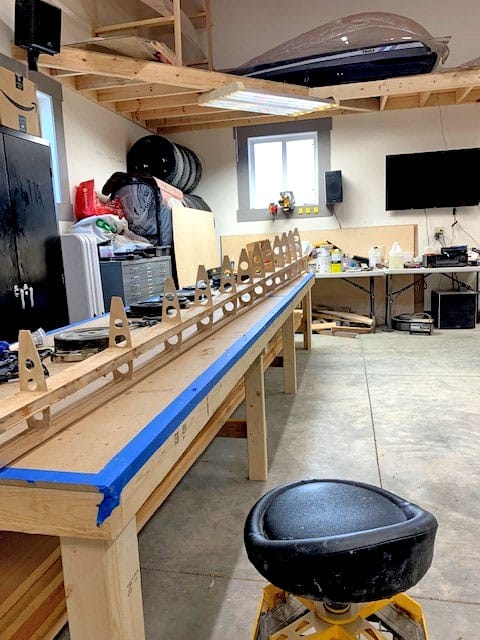
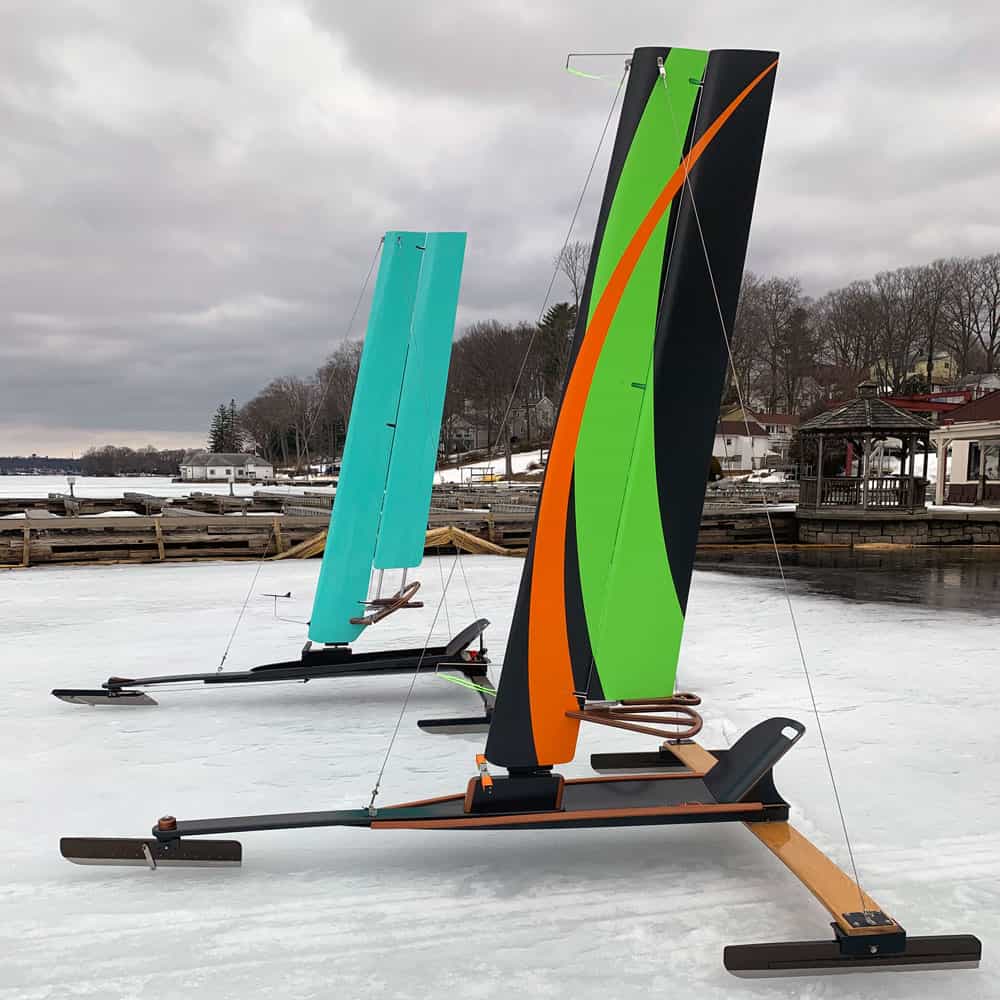 New Jersey Dan Clapp is best known for his innovative A-Class front-seater Skeeter designs and dominating the Skeeter class championships for two decades. He won nine International Skeeter Association regattas and seven Northwest titles. In the past years, he realized that the magnitude of effort to campaign the Skeeter became too much and too time-consuming. The lack of travel partners also contributed to his decision to sell his INSANITY, one of the
New Jersey Dan Clapp is best known for his innovative A-Class front-seater Skeeter designs and dominating the Skeeter class championships for two decades. He won nine International Skeeter Association regattas and seven Northwest titles. In the past years, he realized that the magnitude of effort to campaign the Skeeter became too much and too time-consuming. The lack of travel partners also contributed to his decision to sell his INSANITY, one of the 